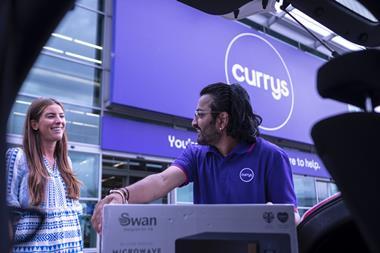Electricals market leader Dixons should show it is heading into Christmas fully charged when it posts first-half results next week.
The Currys and PC World owner’s year got off to a good start in its core markets of the UK, Ireland and northern Europe. Powered by the ongoing popularity of must-have products such as tablets, and expected by analysts to have scooped up white goods market share since rival Comet short-circuited a year ago, Dixons has been on a roll.
But it’s not so long ago that observers wondered whether Dixons’ days were numbered and its present strength is the result of a much-needed overhaul by former boss John Browett and his colleague and successor, Seb James.
In recent months James has further focused Dixons by securing exits from troubled operations such as the Italian and Turkish businesses and online outfit Pixmania. That allows the retailer to devote all its attention to its most worthwhile markets and continue to evolve its own multichannel model in an era of competition with Amazon and other online rivals such as relative newcomer Ao.com.
Dixons has not shied away from being competitive on price and trends such as showrooming, but it has made its stores an advantage. Dixons is cautious on economic prospects, but its batteries show no signs of going flat.
Primark has space to grow
These days the idea of a retailer putting down a million sq ft of space in a year might look like folly. But that is exactly what value fashion giant Primark is doing. But, unlike some others, Primark is going like a train. Last week parent company Associated British Foods reported that Primark has delivered further like-for-like growth despite “exceptional” comparisons.
On Monday Primark opens its first French store, in Marseille, and there is no reason to doubt that the retailer will succeed there as it has so impressively in other overseas markets as well as at home.


























No comments yet